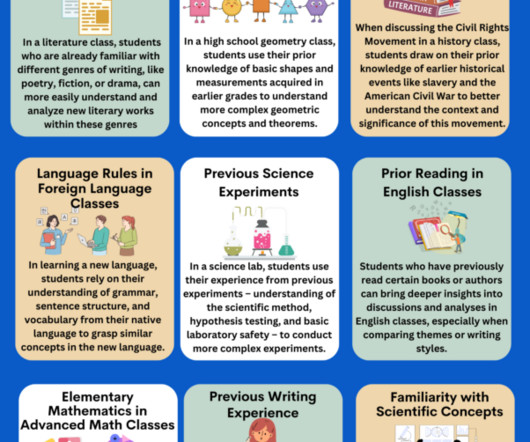What Is Prior Knowledge and Why it Matters?
Educational Technology and Mobile Learning
DECEMBER 23, 2023
Elementary Mathematics in Advanced Math Classes : In advanced math classes, students’ understanding of elementary concepts like multiplication tables and basic algebra is crucial for grasping higher-level concepts like calculus or trigonometry. The implications of these findings are far-reaching for educators and researchers.

















Let's personalize your content